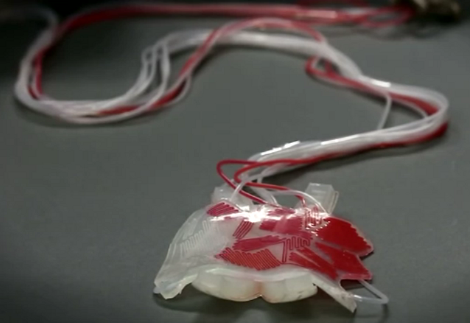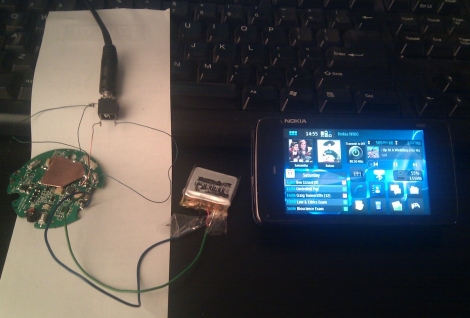
If it were alive this robot would be classified as an invertebrate. It lacks a backbone and interestingly enough, all other bones are missing as well. The Harvard researchers that developed it call it a soft robot. It’s made out of silicone and uses pathways built into the substance to move. By adding pressurized air to these pathways the appendages flex relative to each other. In fact, after the break you can see a video of a starfish-shaped soft robot picking up an egg.
Now they’ve gone one step further. By adding another layer to the top, or even embedding it in the body, the robot gains the ability to change color. Above you can see a soft robot that started without any color (other than the translucent white of the silicone) and is now being changed to red. As the dye is injected it is propagating from the right side to the left. The team believes this could be useful in a swarm robotics situation. If you have a slew of these things searching for something in the dark they could pump glowing dye through their skin when they’ve found it. The demo can be seen after the jump.
Continue reading “Soft Robots Given Veins The Let Them Change Their Stripes”












